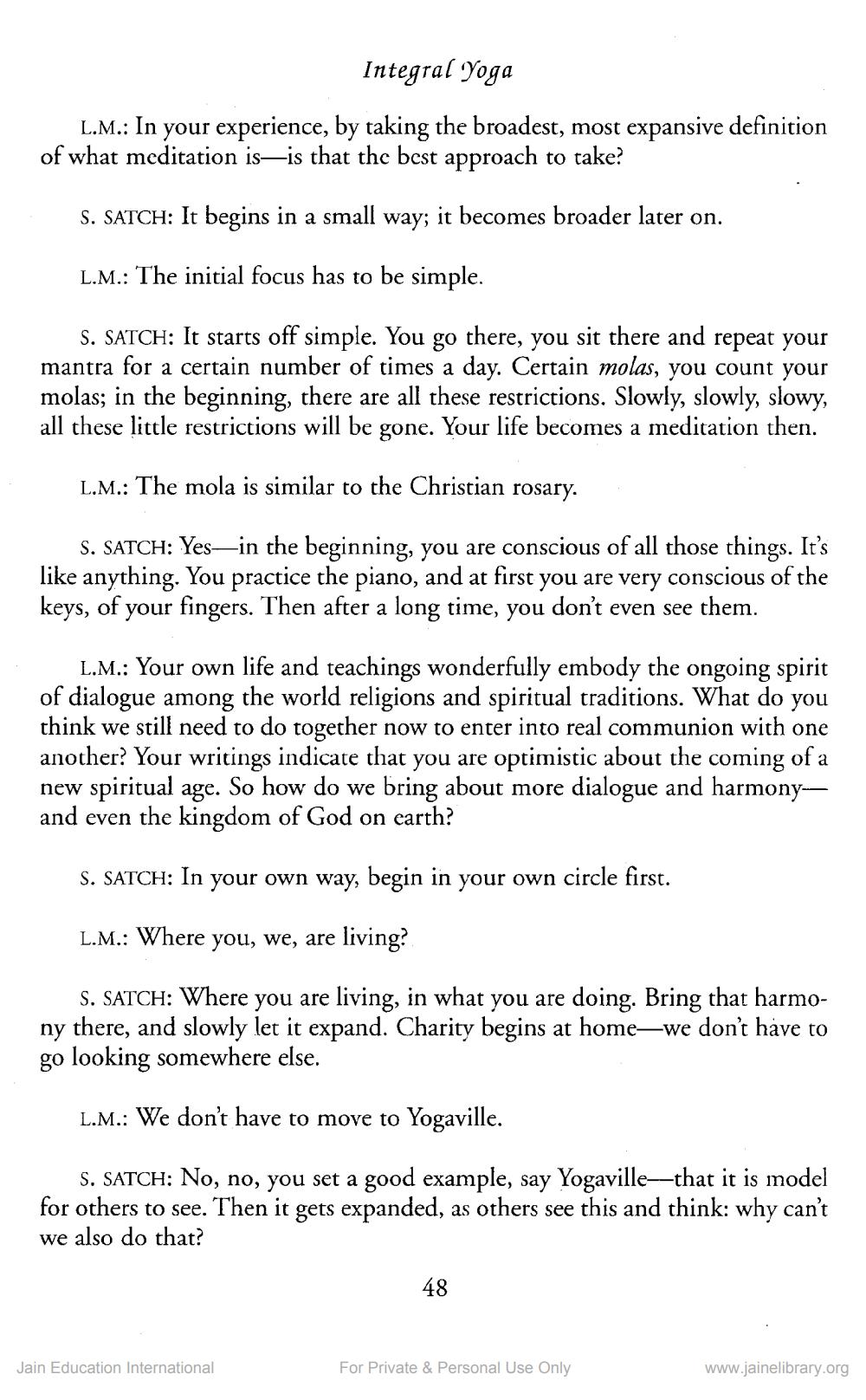________________
Integral Yoga
L.M.: In your experience, by taking the broadest, most expansive definition of what meditation is—is that the best approach to take?
S. SATCH: It begins in a small way; it becomes broader later on.
L.M.: The initial focus has to be simple.
S. SATCH: It starts off simple. You go there, you sit there and repeat your mantra for a certain number of times a day. Certain molas, you count your molas; in the beginning, there are all these restrictions. Slowly, slowly, slowy, all these little restrictions will be gone. Your life becomes a meditation then.
L.M.: The mola is similar to the Christian rosary.
S. SATCH: Yes—in the beginning, you are conscious of all those things. It's like anything. You practice the piano, and at first you are very conscious of the keys, of your fingers. Then after a long time, you don't even see them.
L.M.: Your own life and teachings wonderfully embody the ongoing spirit of dialogue among the world religions and spiritual traditions. What do you think we still need to do together now to enter into real communion with one another? Your writings indicate that you are optimistic about the coming of a new spiritual age. So how do we bring about more dialogue and harmony and even the kingdom of God on earth?
S. SATCH: In your own way, begin in your own circle first.
L.M.: Where you, we, are living?
S. SATCH: Where you are living, in what you are doing. Bring that harmony there, and slowly let it expand. Charity begins at home—we don't have to go looking somewhere else.
L.M.: We don't have to move to Yogaville.
S. SATCH: No, no, you set a good example, say Yogaville—that it is model for others to see. Then it gets expanded, as others see this and think: why can't we also do that?
48
Jain Education International
For Private & Personal Use Only
www.jainelibrary.org




